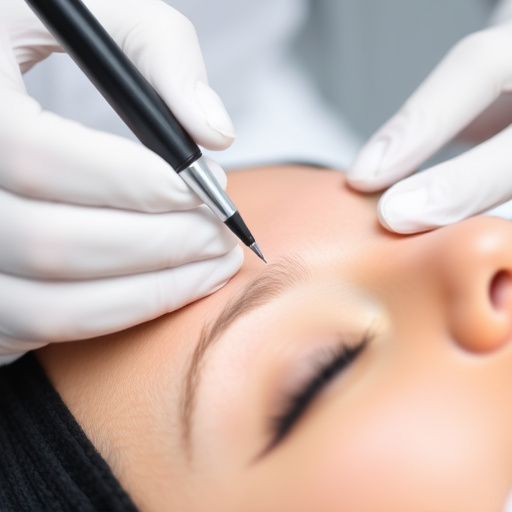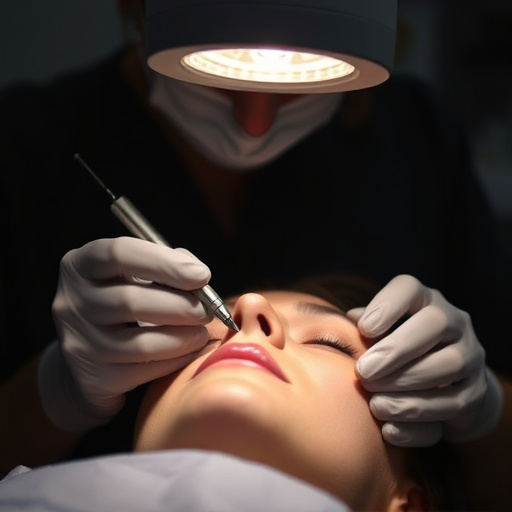Sebaceous filaments, or pores, are tiny openings on the skin where excess sebum (oil) buildup can cause dullness, acne, and enlarged pores. To address these issues, dermatology has seen a rise in innovative treatments like microneedling and modern body contouring techniques for effective sebaceous filament removal. Topical treatments such as chemical peels, microdermabrasion, and specialized creams also help eliminate excess sebum and dead skin cells, resulting in clearer, smoother skin.
In the pursuit of achieving smooth, radiant skin, understanding and addressing sebaceous filaments—tiny openings in the skin that produce sebum—is crucial. While traditionally considered aesthetic nuisances, these filaments play a vital role in skin health. This article explores emerging innovations in sebaceous filament removal treatments, delving into advanced technologies like laser therapy, chemical peels, and microneedling. We examine their safety, potential side effects, and future prospects, empowering readers with knowledge for informed decisions regarding these modern skin-care practices.
- Understanding Sebaceous Filaments and Their Impact on Skin
- Emerging Technologies for Effective Sebaceous Filament Removal
- Safety, Side Effects, and Future Prospects of Modern Treatments
Understanding Sebaceous Filaments and Their Impact on Skin

Sebaceous filaments, often referred to as “pores,” are tiny openings on the surface of our skin where sebaceous glands connect to hair follicles. These glands produce sebum, a natural oil that moisturizes and protects the skin. However, an overabundance of sebum or enlarged pores can lead to a buildup of debris, causing a visible impact on skin health. Sebaceous filament removal treatments have gained prominence as people seek ways to achieve smoother, clearer skin.
Enlarged sebaceous filaments can result in a dull and uneven complexion, impacting overall skin appearance and texture. They may also contribute to the formation of blackheads and acne. Understanding this relationship is crucial when considering various sebaceous filament removal techniques, which often aim to not only minimize pore size but also enhance skin tightening and rejuvenation for a more radiant and healthy-looking skin surface.
Emerging Technologies for Effective Sebaceous Filament Removal

The field of dermatology is continually evolving, and new innovations are emerging to address various skin concerns, including sebaceous filament removal. One notable advancement is the integration of cutting-edge technologies that offer more effective and safer alternatives to traditional methods. For instance, microneedling therapy has gained popularity due to its ability to stimulate collagen production and enhance skin texture by creating microscopic channels in the dermis. This procedure not only improves the appearance of sebaceous filaments but also contributes to overall skin rejuvenation.
Additionally, advancements in body contouring techniques have led to more precise and minimally invasive procedures for removing excess sebum buildup and related skin imperfections. Modern devices utilize targeted energy delivery systems to break down and eliminate sebaceous filaments without causing significant discomfort or downtime. These innovations are particularly beneficial for individuals seeking non-surgical solutions for achieving clearer, smoother skin, complementing the well-known effectiveness of microneedling therapy in conjunction with wrinkle reduction treatments.
Safety, Side Effects, and Future Prospects of Modern Treatments

In light of the above discussions, it’s clear that new innovations in sebaceous filament removal treatments are revolutionizing skincare. Emerging technologies offer more effective and safer options for those seeking smoother, brighter skin. As research continues, we can expect even more advanced solutions to enhance beauty routines and promote healthier complexions. Remember that understanding these filaments and their impact is key to making informed decisions about your skin care journey.














